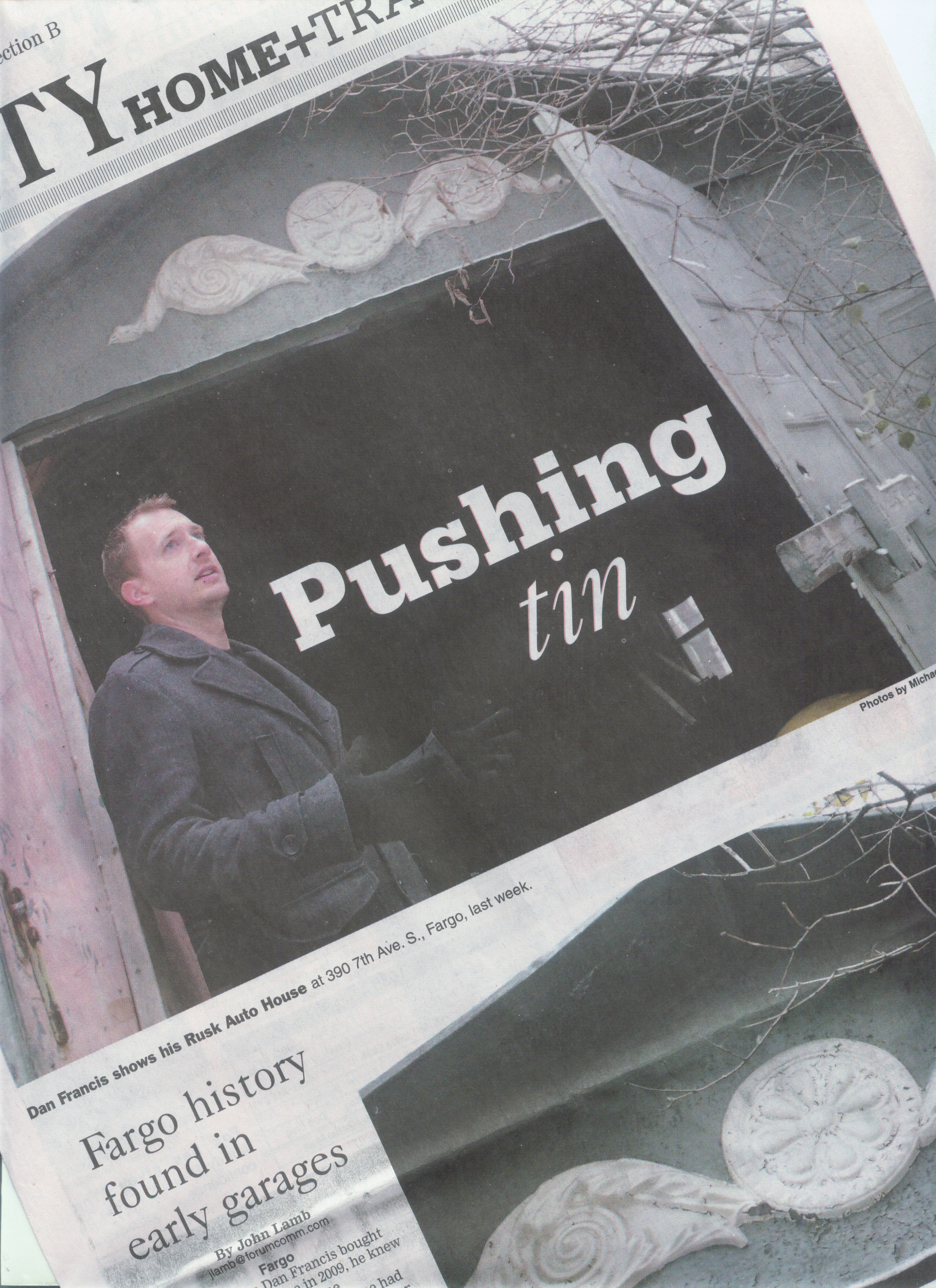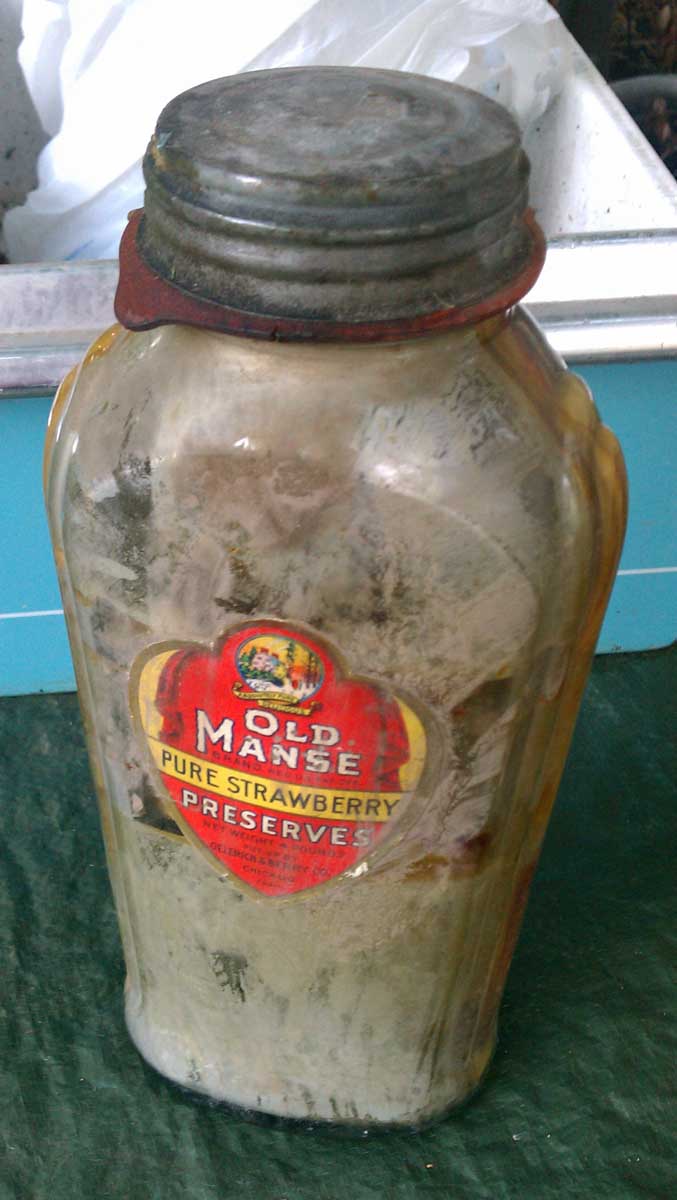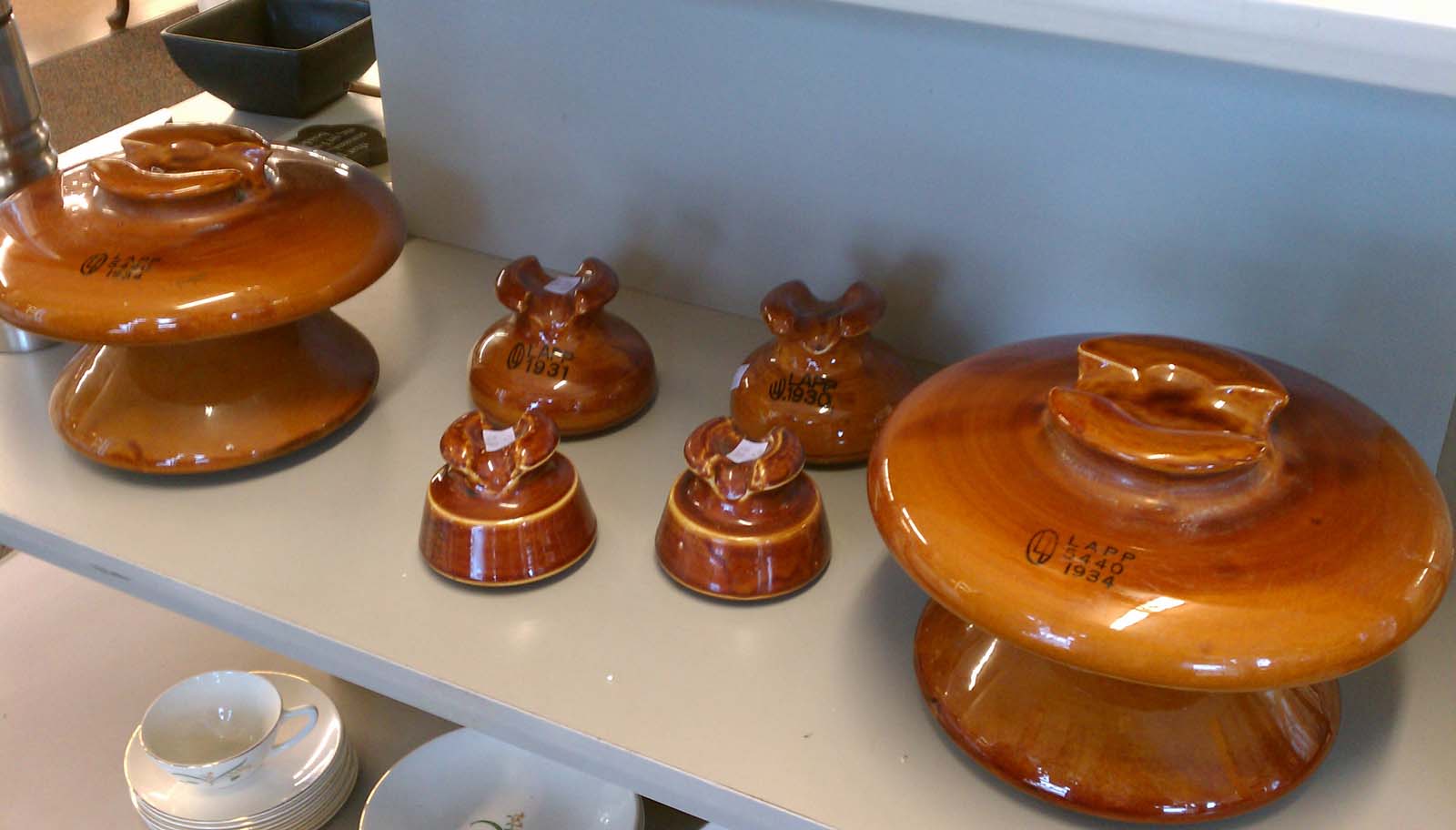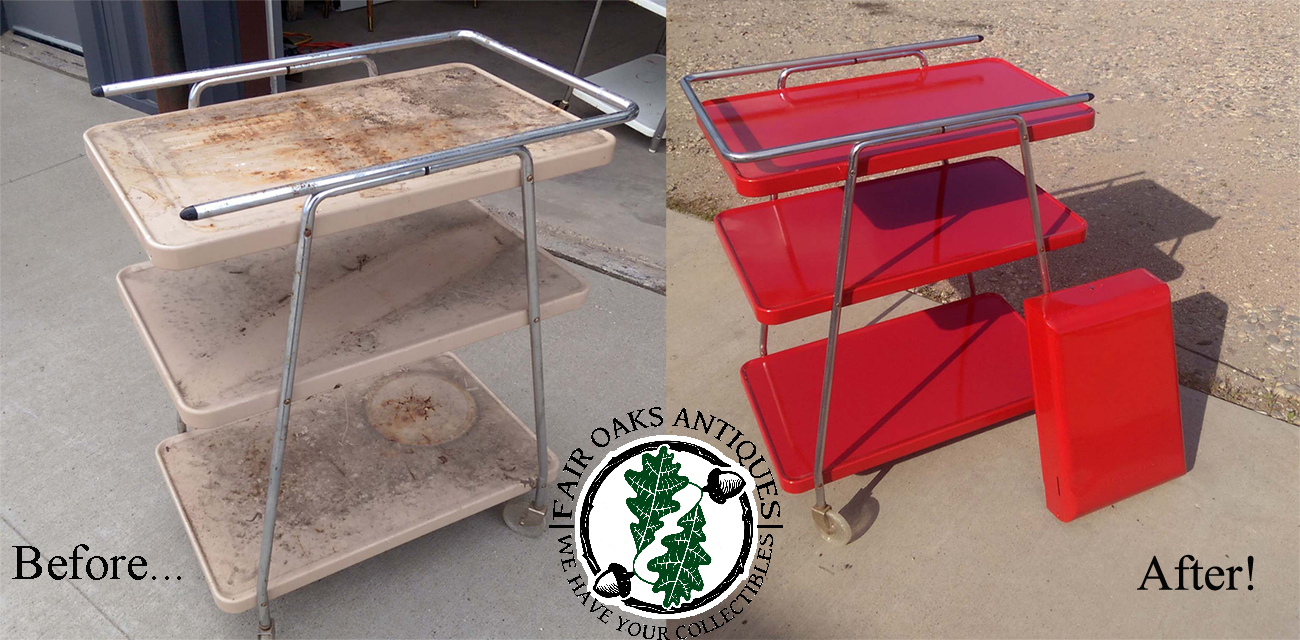Category: Finders Keepers
-

Rusk Auto House in the Forum
So, I’m just hanging around the house, checking the internet on my phone, and I see a headline from the Fargo Forum: “Pushing Tin: Fargo History Found In Early Garages“. Of course, I know exactly what they’re talking about — one of my favorite things is the Rusk Auto House, a product of the Fargo Cornice…
-

Preserving The Integrity Of An Old Glass Preserves Bottle
Sometimes I fall in love with things — to the point of obsession, or, as the hubby would say, to the point of stupidity. *wink* Today’s example is an old preserves jar. I knew that whatever was in this old glass jar was not a “good thing,” but somehow the metallic silver tone still sparkled…
-

Vintage Ceramic Insulators
We spotted these fantastic vintage ceramic power-line insulators – including HUGE ones. Note these vintage insulators are not the usual glass telephone varieties, the are porcelain or pottery insulators by LAPP, with a rich glaze of what I’d call a “pumpkin brown”. Looks like these are dated from 1930-1934? We didn’t buy them. But if…
